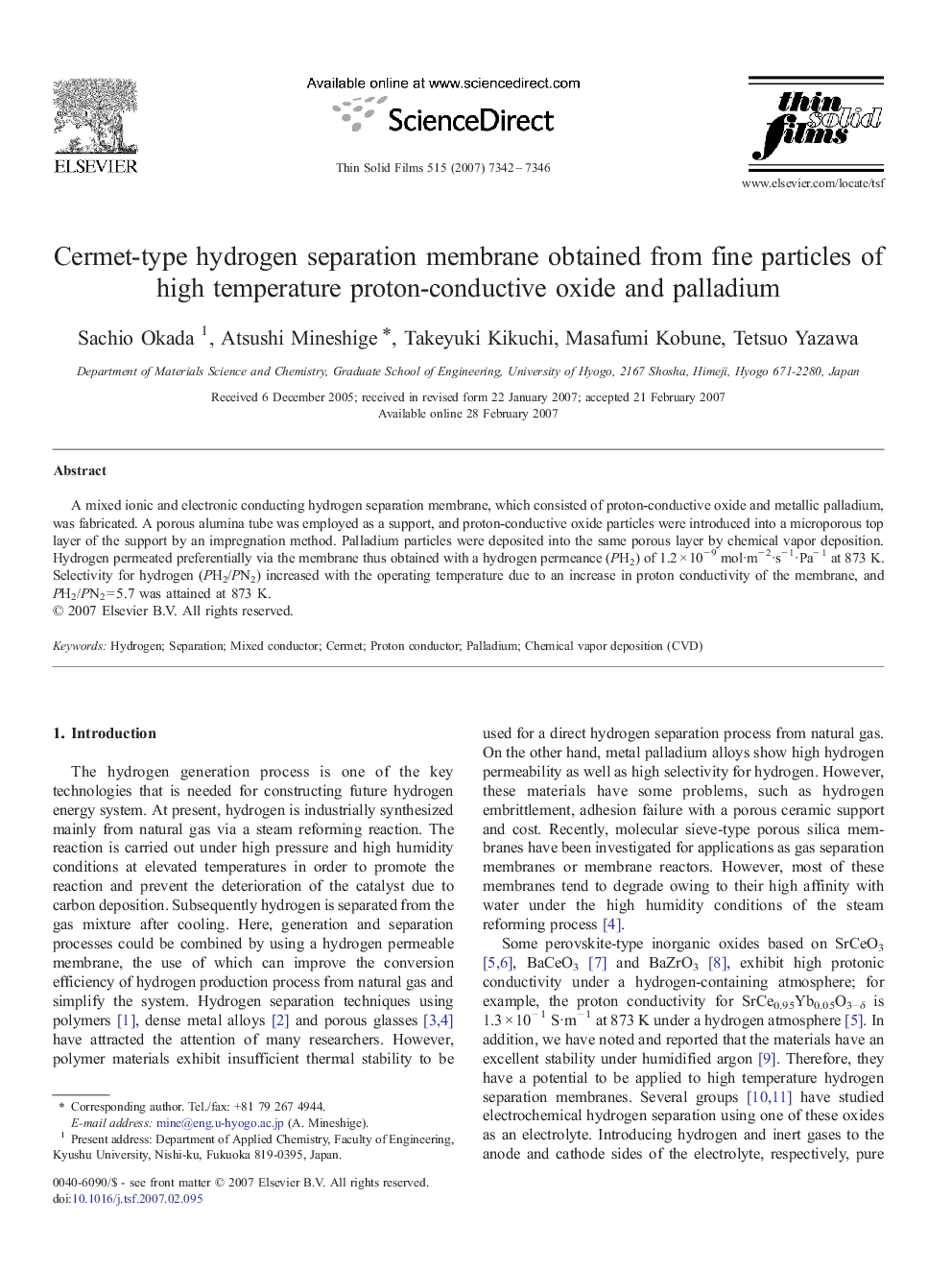| Article ID | Journal | Published Year | Pages | File Type |
|---|---|---|---|---|
| 1674790 | Thin Solid Films | 2007 | 5 Pages |
Abstract
A mixed ionic and electronic conducting hydrogen separation membrane, which consisted of proton-conductive oxide and metallic palladium, was fabricated. A porous alumina tube was employed as a support, and proton-conductive oxide particles were introduced into a microporous top layer of the support by an impregnation method. Palladium particles were deposited into the same porous layer by chemical vapor deposition. Hydrogen permeated preferentially via the membrane thus obtained with a hydrogen permeance (PH2) of 1.2 Ã 10â 9 mol·mâ 2·sâ 1·Paâ 1 at 873 K. Selectivity for hydrogen (PH2/PN2) increased with the operating temperature due to an increase in proton conductivity of the membrane, and PH2/PN2 = 5.7 was attained at 873 K.
Keywords
Related Topics
Physical Sciences and Engineering
Materials Science
Nanotechnology
Authors
Sachio Okada, Atsushi Mineshige, Takeyuki Kikuchi, Masafumi Kobune, Tetsuo Yazawa,
